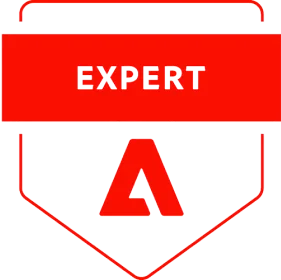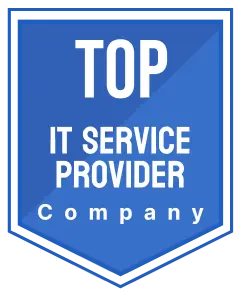Is hiring a dedicated team enough to ensure success, or is there something more crucial at play? Businesses worldwide are rapidly shifting towards hybrid team models, combining in-house expertise with remote or offshore talent.
However, while hiring a dedicated team can provide flexibility and access to specialized skills, the real challenge lies in integration, not just recruitment.
Without a structured approach, organizations risk communication gaps, inefficiencies, and cultural misalignment. At WebOConnect, we understand that seamless remote team integration is the key to unlocking a high-performing workforce.
This guide will provide practical team integration best practices, helping you create a cohesive unit where dedicated and in-house teams collaborate effortlessly.
Dedicated Teams vs. In-House Teams: Breaking the Silo Mindset
A dedicated team is not just a group of external hires working in isolation. It is an extension of your workforce and must function as a unified entity with your in-house staff.
Key Differences: Autonomy vs. Alignment
- In-house teams are deeply ingrained in a company’s culture, processes, and day-to-day operations.
- Dedicated teams usually work remotely, offshore, tend to specialize in differentiating areas of expertise, but may not yet be culturally and commercially aligned to client's practices and processes.
Integration works perfectly when silos are removed, and dedicated teams seamlessly become part of the everyday business framework, decision-making, and long-term goals.
Grounding the Seed: Preparing Your Organization for a Dedicated Team
Before a dedicated team comes in, companies need to build a strong foundation.
- Identify Skill Gaps: Where and what does your in-house team need assistance with?
- Set Integration Goals: Are short-term project support or a long-term partner with similar goals to be applied?
- Align Leadership & Stakeholders: A shared vision will lead the way toward smooth offshore team integration.
Asking these questions early will guarantee that the dedicated team is well integrated at any minimum level with your organization’s needs.
Choosing the Right Dedicated Team: Compatibility Consideration
Hiring a team that checks all the technical boxes is not enough; cultural compatibility is just as important.
Skills vs. Cultural Fit: Why Both Matter
- A team with strong technical expertise but no alignment with your company’s values will disrupt the workflow.
- Examine collaborative mindset, adaptability, and communication skills, in addition to assessing technical prowess.
Red Flags to Watch Out For:
- A reluctance to adapt to your procedures
- A lack of proactive communication
- Misaligned work ethics or business objectives
Selecting the right team will increase productivity rather than open up a whole new set of hurdles.
The Integration Blueprint: Structuring Workflows for Success
Misaligned workflows result in inevitable congestion, delays, and inefficiencies. The steps in integrating such dedicated teams are as follows:
- Unified project management style (Agile, Scrum, or Kanban) for clear visualization.
- Utilizing collaboration tools such as Slack, Jira, Asana, etc. to provide full transparency.
- Design an onboarding process that sets up the dedicated team with internal workflows while minimizing disruption to existing operations.
With the right structure, managing remote versus in-house teams becomes tremendously easier.
Communication is Deal Breaker: Solutions for Interactions with Seamlessness
Poor communication is the single most damaging cause of the failure of a remote team integration. To avoid such misinterpretations, here is how:
- Balance real-time and asynchronous communication to take into account varying time zones.
- Define clear reporting expectations in order to eliminate guessing game.
- Structured platforms such as Confluence for documentation and Notion for tasks tracking should be utilized.
Strong communication frameworks make the basis of an effective offshore employee as against the remote in-house employee.
Creating a Coherent Work Ethics: Team-Building is Not All
Integration involves much more than just setting up workflows and distribution of work; it involves creating a sense of belonging.
- Go beyond documentation-dedicated teams into the culture.
- Encouragement of informal interactions to fill cultural and geographical gaps.
- Collaborative and joint problem-solving exercises strengthen relationships.
They are achieved and better able to bond because they feel included and valued; therefore it is inevitable that they will enjoy team work.
Performance Management and Accountability Without Micromanagement
Micromanagement kills creativity; better accountability structures should be put into place:
- Assign KPIs that are aligned to business goals in such a way that both teams would pursue the same goal successfully.
- Hold performance reviews periodically to be an exercise in growth rather than blame finding.
- Recognize achievements to keep motivation high.
Thus, it increases autonomy in performance.
Overcoming Common Integration Challenges: Practical Solutions
There isn't any organization that perhaps don't find some hurdles when using even the world's best strategies. Below are some proactive ways to handle them:
Dealing with Time Zone Differences.
- Set overlapping working hours for real-time collaboration.
- Utilize asynchronous updates for smooth handovers.
Dealing with Cultural Barriers
- Conduct cultural training for the mutual understanding.
- Encourage cross-team mentoring for softer adaptation.
Scaling up Integration Efforts
- Routine revisiting of integration strategies is important as the increase in size of teams necessitates this control over the efficiency.
Technology as an Enabler: The Right Tools for the Job
The relevant technology can, thus, make it simple for teams to apply the integration best practice.
- Slack & Microsoft Teams: Collaboration in real time
- Jira & Trello: Project Tracking
- Confluence & Notion: Documentation & Knowledge Sharing
- AI-Powered Automations: Minimize manual working for smooth coordination
Having the right tools is a priority in ensuring enhanced communication for remote teams.
Why WebOConnect is Your Best Partner for Dedicated Team Integration
At WebOConnect, we help integrate dedicated teams into an existing in-house team across the globe.
- Deep knowledge of integrating both offshore & in-house teams.
- Make adjustments to integrate strategies to facilitate smooth collaboration.
- Access to the best remote talent with corresponding culture and technical expertise.
Ready to transform remote team collaboration? Get in touch with WeboConnect today.
Conclusion: The Future of Hybrid Teams – A Competitive Advantage
Businesses integrating their dedicated teams with in-house staff have the advantage of competing on business grounds. Seamless integration is better than mere onboarding; it takes a strategy to rely on clear communication, anchored workflows, and a common culture in any company.
Through structured processes and with the right tools for collaboration, as well as improved, cohesive team-building, companies benefit from such productive engagement for both in-house and dedicated teams.
As the modern business world shifts towards hybrid team models, those who opt for integration in their business processes will benefit from productivity and generate innovations and long-term growth.
Investing in a well-planned integration strategy today may put your organization, for the more significant future, in a sustainable competitive advantage.

_thumb.webp)
_thumb.webp)
_thumb.webp)

_thumb.webp)













